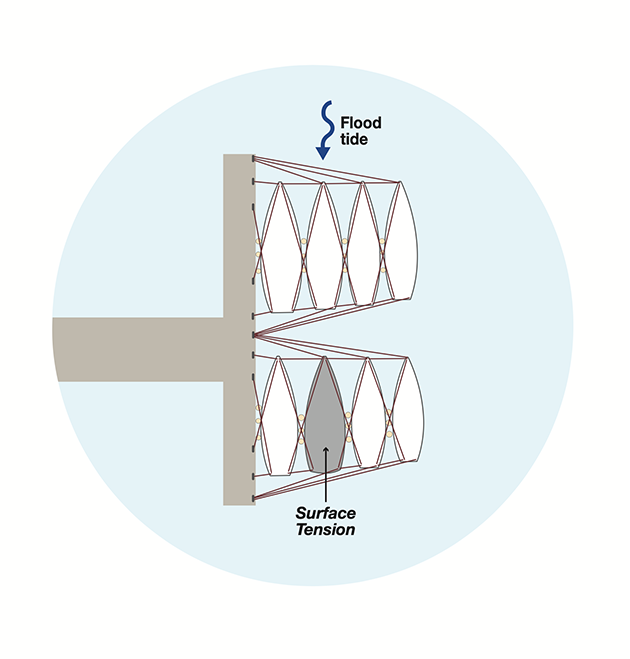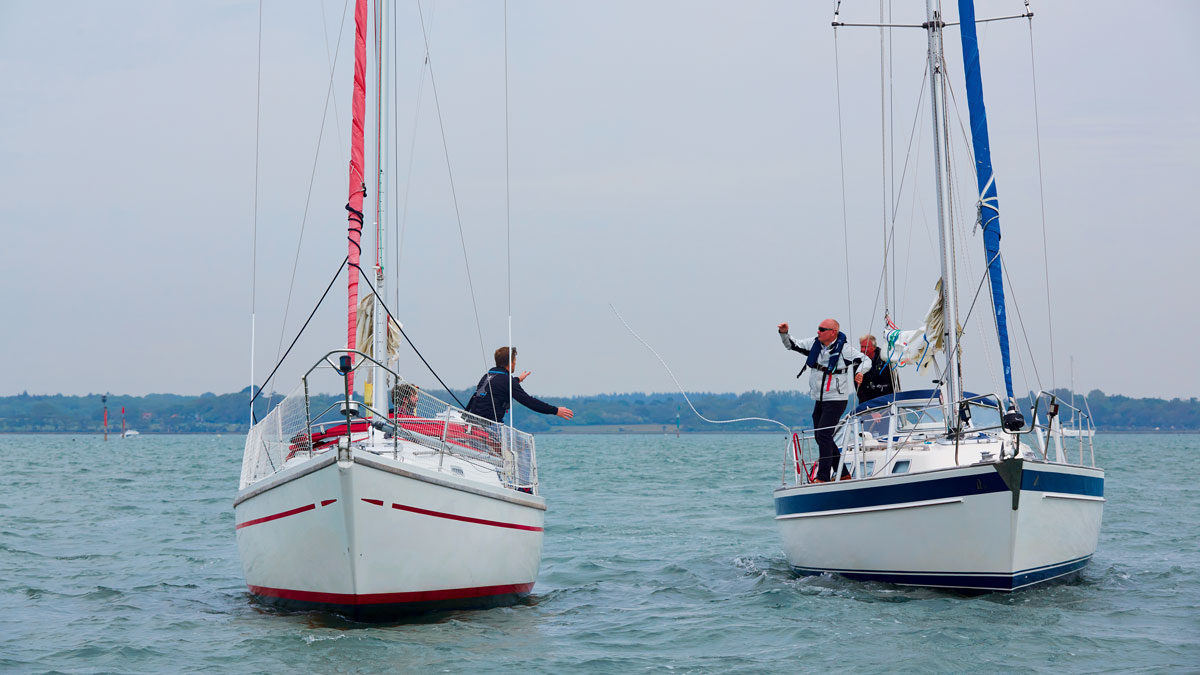Your boat is trapped in the middle of a raft and there are no crew on board. What do you do? James Stevens answers your Questions of Seamanship
Your boat is trapped in the middle of a raft and there are no crew onboard. What do you do?
Question:
Louise and two friends are on a sailing holiday on board Surface Tension, a 9m cruising yacht.
They have planned an overnight stop at a marina up a tidal river.
When they arrive, all the finger berths in the marina are occupied and the two hammerhead berths are also taken.
They call the marina. The reply is an apology; they are so full, there is a rally that evening, but they can raft alongside one of the yachts on the hammerhead.
Louise looks at the flood tide running past the hammerhead and decides the easiest option is to come alongside the upstream yacht by turning her boat up river and motoring into the stream.

Credit: Maxine Heath
It all goes fine and they secure alongside and set up shorelines. Before long another yacht appears.
The berthing master signals for them to come alongside Surface Tension.
By the end of the evening Surface Tension has two yachts outside.
The other yacht on the hammerhead has an equal raft of yachts outside. All the yachts know how to raft and all have shorelines attached.
Louise explains to the outside crews that Surface Tension has to leave at the end of the flood, around 0900 next morning.
Next morning at 0830 there is no one on board any of the yachts, they are all having breakfast ashore together.
Is there any way Surface Tension can leave without assistance from the other crews on the raft?
Continues below…
Tidal calculations: why online predictions can be dangerously inaccurate
On shallow estuaries, tidal calculations are vital, but Ken Endean finds errors in online predictions
Mooring: A guide to coming alongside, rafting & traditional skills
Understanding traditional mooring skills like how to tie up alongside a wall or between piles, raft up or even dry…
How to raft up safely and securely
James Stevens looks at the seamanship and etiquette needed to raft up and identifies the benefits and pitfalls of coming…
Do you offer a tow or not?
In calm conditions, would you offer a tow to a broken down yacht? James Stevens answers your Questions of Seamanship
Answer:
This is a frustrating situation and inconsiderate of the rest of the raft to trap the boat inside.
Louise’s best chance of leaving is while the tide is flooding so she can slip the boat out astern down tide.
If she leaves it until the ebb, the raft will drift out of control when she departs.
This manoeuvre requires at least one crew member from Surface Tension to remain on the raft and be picked up later.
A line is passed from the stern of the inside yacht around the bow of Surface Tension to the stern of the outside yacht.
The stern shorelines are removed from the outside yachts. Surface Tension is detached from the yachts either side and carefully eased astern with plenty of fenders.
Once free, the stream will help bring the outside yachts alongside the inside boat with some help from the crew member left on the raft.
The yachts must now be remoored and the shorelines secured before Surface Tension comes alongside the outside of the raft to pick up the crew.
The alternative is to wait until the other yacht crews return.
The easiest way for Louise to leave then, if the tide is ebbing, is for the outside yachts to slip their lines and stand off while Louise manoeuvres Surface Tension out astern against the stream.
In these tight tidal situations it is really important to avoid becoming positioned beam on to the stream.
Enjoyed reading How do you manoeuvre out of a raft?
A subscription to Yachting Monthly magazine costs around 40% less than the cover price.
Print and digital editions are available through Magazines Direct – where you can also find the latest deals.
YM is packed with information to help you get the most from your time on the water.
-
-
-
- Take your seamanship to the next level with tips, advice and skills from our experts
- Impartial in-depth reviews of the latest yachts and equipment
- Cruising guides to help you reach those dream destinations
-
-
Follow us on Facebook, Twitter and Instagram.








